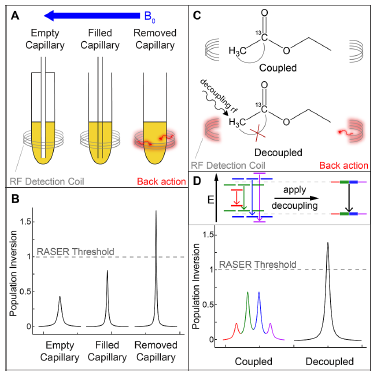648. RASER for Increased Spectral Resolution in Carbon-13 NMR
Christopher Nelson, Andreas B. Schmidt, Isaiah Adelabu, Shiraz Nantogma, Seth Dilday, Nicholas Volya, Iuliia Mandzhieva, Valerij G. Kiselev, Abubakar Abdurraheem, Henri de Maissin, Sören Lehmkuhl, Stephan Appelt, Eduard Y. Chekmenev, Thomas Theis, Analchem, (2025), DOI: 10.1021/acs.analchem.4c05527
Precision in nuclear magnetic resonance (NMR) spectroscopy and resolution in magnetic resonance imaging (MRI) are thought to be fundamentally limited by the transverse relaxation time. With the recent advent of radiofrequency amplification by stimulated emission of radiation (RASER), it is becoming apparent that RASERs can break these fundamental limitations and provide significant improvements in the resolution of NMR spectra and the resolution in MRI images. In this article, we show that carbon-13 RASERs can be controlled by changes to the magnetic field homogeneity and the spin coupling network. As illustrative examples of tools commonly employed in high resolution NMR spectroscopy, we employ the control of magnetic field homogeneity with simple changes to the sample geometry and the spin-coupling network with proton decoupling pulses. These changes control the distance of the NMR system from the RASER threshold. Finally, we demonstrate that the 13C-RASER spectra can be obtained reflecting the usual, thermal NMR spectra without significant distortions except with at least 10-fold narrower spectral-resonance line widths, thereby significantly increasing our precision in determining NMR parameters such as the J-coupling in the spin system. In contrast to 1H RASERs, we discuss how 13C-RASER systems retain the spin information (J-couplings and chemical shifts) with high fidelity.
